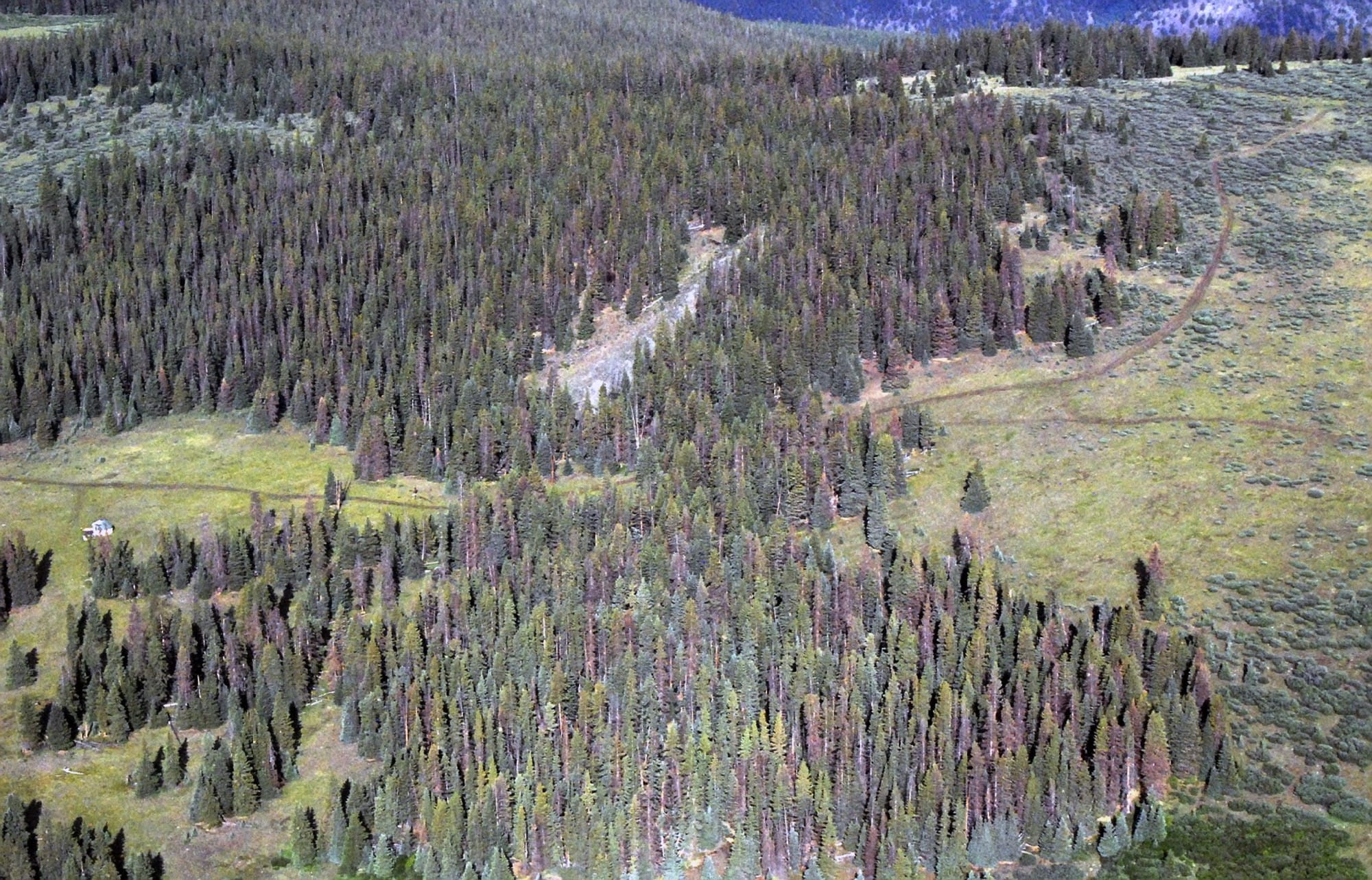CHEYENNE, Wyo. — An outbreak of spruce beetles continues to accelerate in Colorado, as a much larger outbreak of the similar mountain pine beetle continues to slow across Wyoming, Colorado and the Black Hills, according to a new survey by the U.S. Forest Service.
Every year, the Forest Service conducts an aerial survey of forests in Colorado, Wyoming and South Dakota. The 2013 survey shows spruce beetles spreading to ever-larger expanses of new forest in Colorado for a fifth consecutive year.
Spruce beetles infested 338 square miles of previously unaffected Colorado forest last year. The beetles laid claim to 286 square miles of new forest in 2012.
In 2008, spruce beetles were active in a total of about 95 square miles of forest in Colorado. One reason spruce beetles are spreading in Colorado is the state’s large numbers of aging, weaker trees of the species they’re adapted to infest.
“In Colorado, there’s a great deal of susceptible hosts — old, mature spruce stands,” Brian Howell, regional aerial survey program manager for the Forest Service, said Thursday.
Also, recent Colorado blowdowns — massive numbers of trees simultaneously blown over by storms — might have given spruce beetles good places to reproduce in numbers large enough to become a threat to living trees.
The spruce beetle infestation remains small compared with the havoc wreaked by the mountain pine beetle. Spruce beetles have infested and substantially killed some 2,700 square miles of Wyoming and Colorado forest since the mid-1990s, but that’s still only about one-fourth the scope of the mountain pine beetle outbreak.
In Wyoming, spruce beetles have killed large numbers of trees in the Medicine Bow and Sierra Madre ranges in the southern part of the state and remain active in the Absaroka Mountains southeast of Yellowstone.
Spruce beetles were active over some 56 square miles of Wyoming forest last year, a roughly average number compared to the past decade.
Forest officials don’t expect spruce beetles, ultimately, to kill as many trees as the mountain pine beetle has because their host tree species aren’t as numerous as the mountain pine beetle’s host species. While spruce beetles infest Engelmann spruce and blue spruce, the mountain pine beetle infests lodgepole, limber and ponderosa pine.
Since the mid-1990s, mountain pine beetle infestation in the three states has covered a total area larger than Massachusetts. The pine beetle outbreak has slowed significantly over the past four years, largely because there are too few live lodgepole, limber and ponderosa trees left to infest.
There are exceptions. Some pockets of forest, including along the Colorado Front Range, have remained unaffected by mountain pine beetle for reasons not entirely clear, said Susan Gray, a regional forest health manager for the Forest Service.
“Maybe winds haven’t driven beetles in that direction,” Gray said. “People really don’t know why. They’re continuing to look into it.”
Frigid weather can kill beetles, but spells of bitter cold in the Rockies this winter are unlikely to have much effect on either beetle species, Gray said. Cold temperatures are more likely to kill beetles in late spring and early fall.



